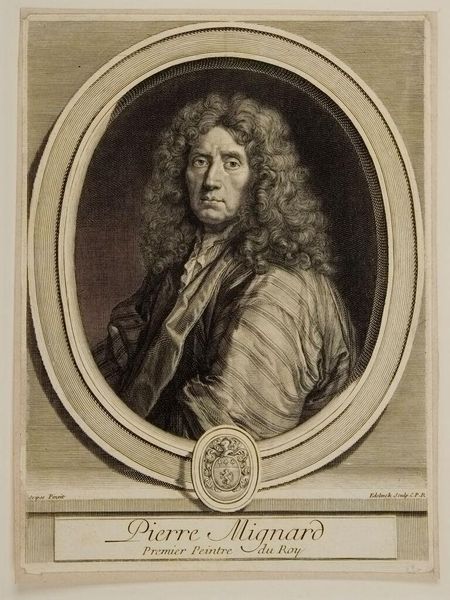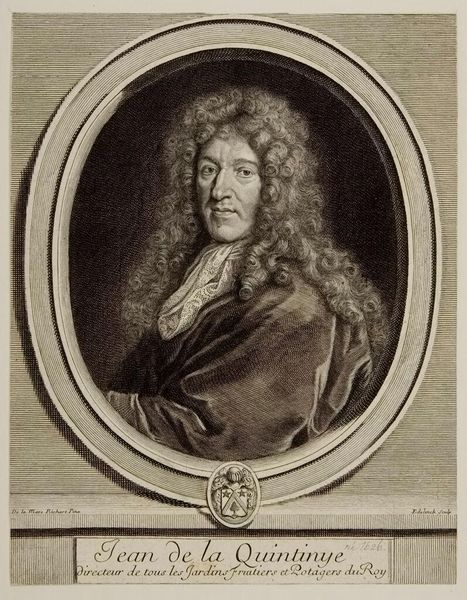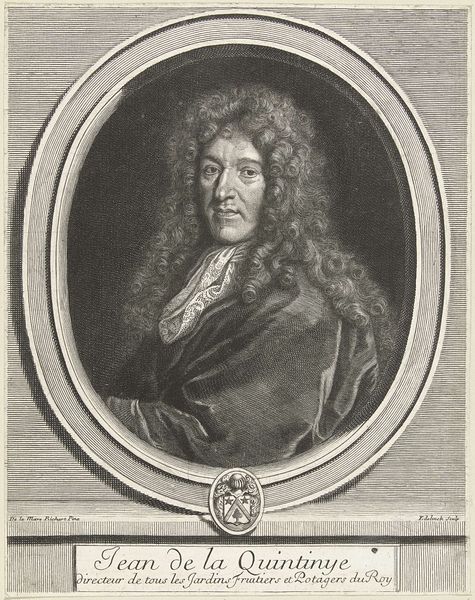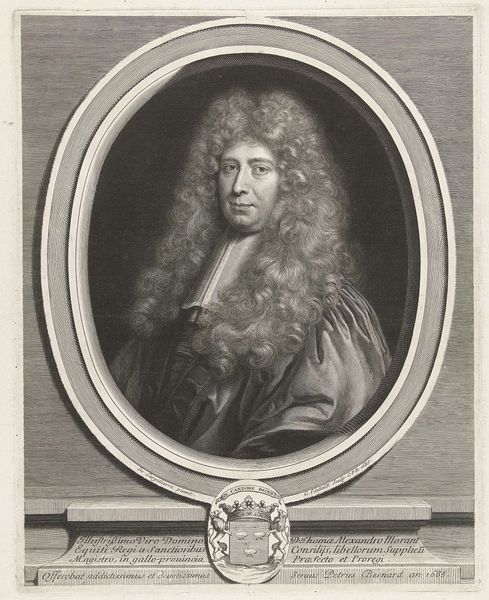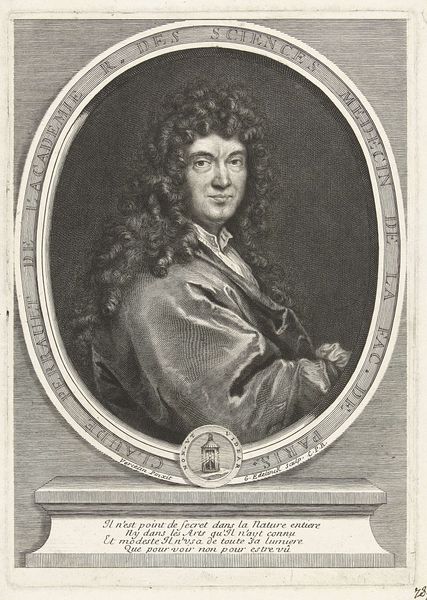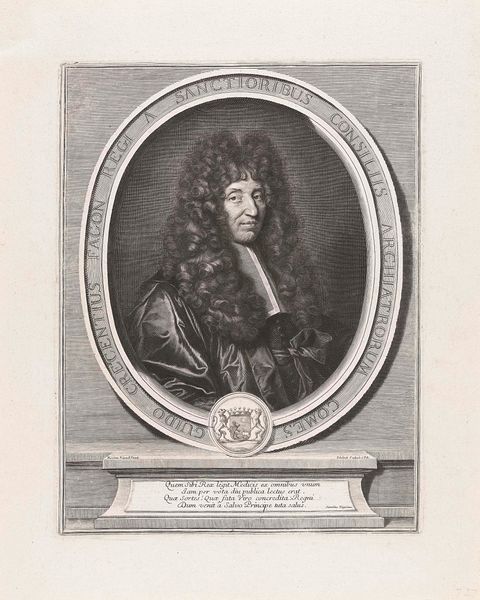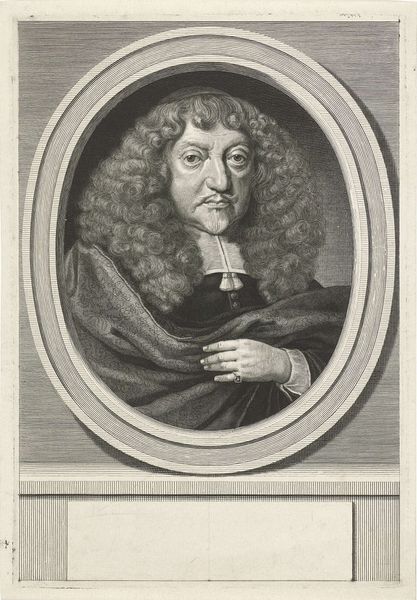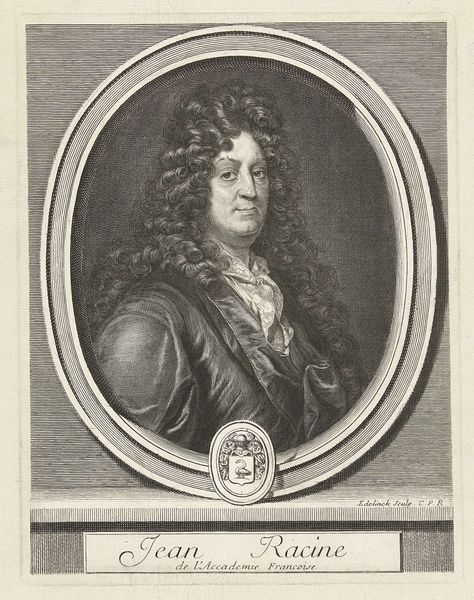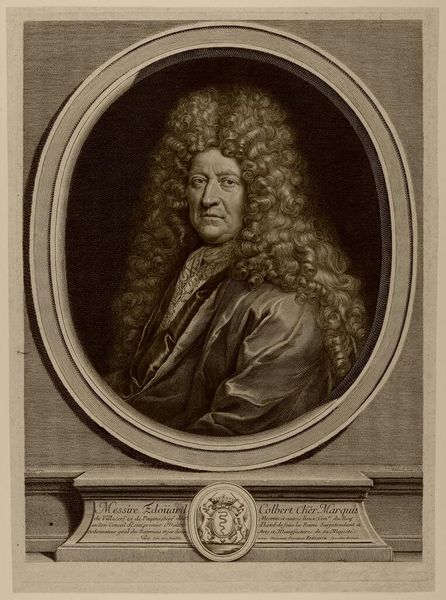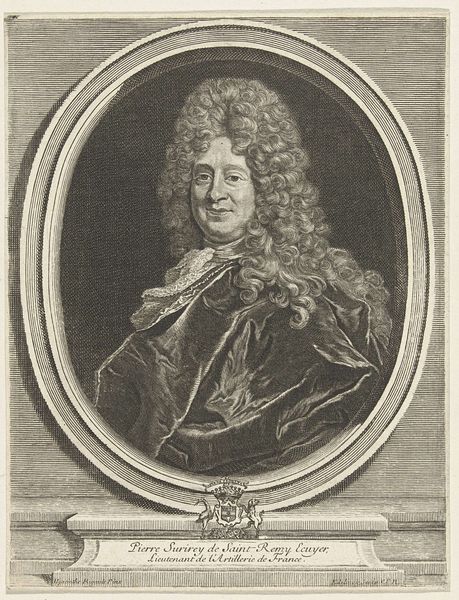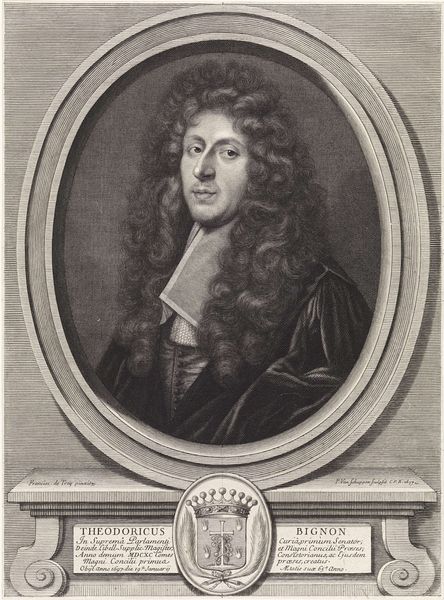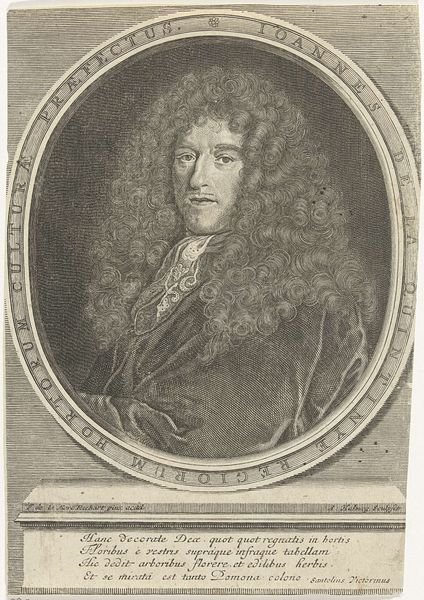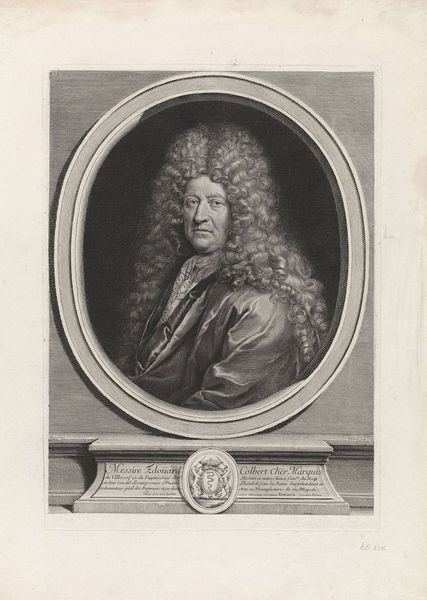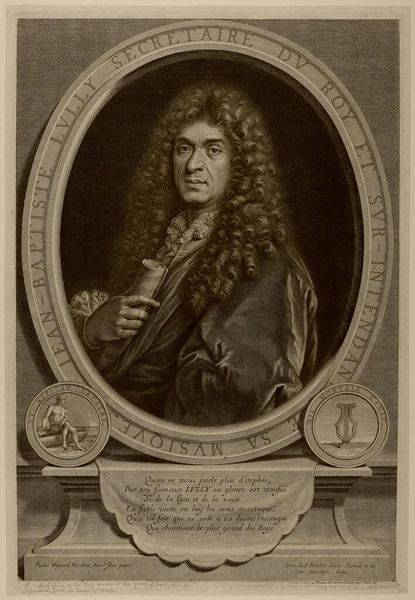
print, engraving
#
portrait
#
baroque
# print
#
history-painting
#
engraving
Dimensions: height 253 mm, width 185 mm
Copyright: Rijks Museum: Open Domain
Editor: This engraving, "Portrait of Pierre Mignard," was created by Gérard Edelinck sometime between 1666 and 1707 and resides in the Rijksmuseum. What strikes me immediately is how meticulously the artist captures the texture of Mignard's hair, and also the luxurious folds of his robe. What's your take on this piece? Curator: It's fascinating to consider this print within the context of Louis XIV's France, isn’t it? Mignard, as "Premier Peintre du Roi," held immense cultural power. Prints like this one served as a form of publicity, almost propaganda, cementing the image of both the artist and the king’s cultural court. How do you think this image contributes to Mignard's reputation, and what societal values does it promote? Editor: It feels very formal and emphasizes his status. His serious expression and elegant clothing definitely contribute to a sense of importance and sophistication befitting his role as the king’s painter. So, it's a constructed image, carefully curated for public consumption? Curator: Precisely! Edelinck, as the engraver, isn't just creating a likeness; he’s participating in a larger project of constructing and disseminating power through imagery. Think about how this circulated - who saw it, where, and what was the intention of the print being created and distributed? This wasn't merely about aesthetics, it was about cultural capital. Editor: So it's like a seventeenth-century social media campaign for artists who were attached to the Court? That’s wild. I hadn't considered that. Thanks! Curator: Exactly. Examining art through the lens of power structures allows us a richer understanding of the art and it's world!
Comments
No comments
Be the first to comment and join the conversation on the ultimate creative platform.
